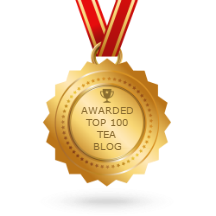by William I. Lengeman III
Yellow tea? Really?
 One could safely say, for all intents and purposes, that there are five major categories of tea that are manufactured from the Camellia sinensis plant. Black and green tea are probably the best-known of these and the most popular. But oolong, white and puerh varieties have all benefited from increased interest in specialty and premium tea in recent years.
One could safely say, for all intents and purposes, that there are five major categories of tea that are manufactured from the Camellia sinensis plant. Black and green tea are probably the best-known of these and the most popular. But oolong, white and puerh varieties have all benefited from increased interest in specialty and premium tea in recent years.
You could make the argument that there is a sixth category of tea, but yellow tea is so obscure that there are likely many tea enthusiasts who are not even aware that it exists. Unlike the types of tea already mentioned, most of which are produced in a number of countries, yellow tea is only produced in China.
Yellow tea dates from the Tang Dynasty, about 1,300 years ago. Some of the better-known yellow varieties include Meng Ding Huang Ya (Yellow Bud) from Sichuan province and Jun Shan Yin Zhen (Silver Needle) from Hunan province. The latter is also ranked as one of China’s fabled Ten Most Famous Teas.
As noted in Mary Lou and Robert Heiss’s The Story of Tea, yellow tea bears a little more than a passing resemblance to green. One of the main differences between the two is that after the initial drying stage and before the first firing, yellow tea goes through a stage “called men huan, during which yellow leaf tea is lightly and slowly steamed, then covered with a cloth to allow the leaves to breathe.”
Leaves from real yellow tea are renowned for the fact that they stand on end in the water while being steeped. The flavor of these varieties is typically very light and delicate, with similarities to certain varieties of white tea or some of the more subtle green teas.



Leave a comment